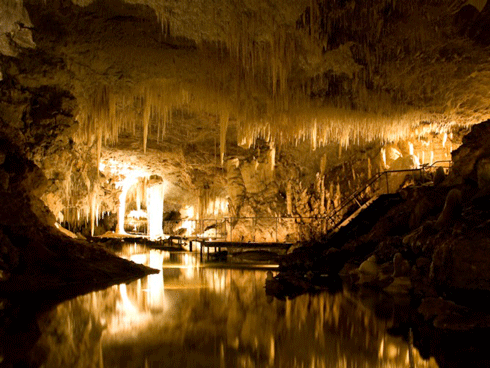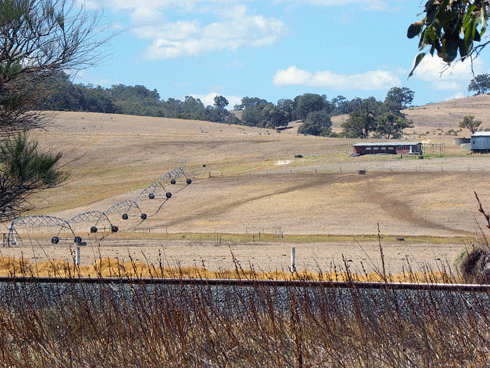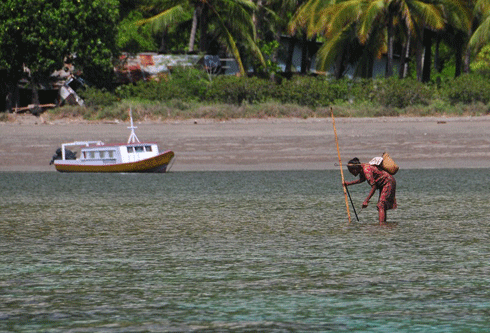
|
Published: 25 February 2013
In south-western Australia, water shortages will only worsen
While the rest of Australia has had a reprieve from the millennium drought, and floods have recently affected many areas along the north eastern Australian coast, the extended dry period that has affected south-western Australia since about 1975 continues unabated.
The loss of traditional water sources has required the building of seawater desalination plants capable of providing half the drinking water needs of people living in the Perth region.
Traditional water supplies are projected to dry even more by 2030 according to research just published by CSIRO scientists.
Global climate models (GCMs) give variable projections but they usually provide some hope for a wetter future in most regions. However, all 15 GCMs that provide daily information project an even drier 2030 for south-western Australia. On a percentage basis, the runoff into the reservoirs that supply water to Perth and into irrigation dams is projected to reduce by about three times more than the reduction in rainfall.
Even more disturbing, because catchments have dried so much since 1975, a given rainfall amount now generates less runoff. Catchment water yields will only recover if there are decades of rainfall large enough to raise groundwater levels within the deeply weathered profiles. According to the GCMs, this is very unlikely to happen.

|
|
Groundwater seeping from a channel bank at Bakers Hill east of Perth: interactions between aquifers, rivers and waterways are projected to change. Credit:
W van Aken/scienceimage
|
The story for groundwater levels on the coastal Perth Basin, the water source of choice for most people living in the region, is more complex.
The Basin contains aquifers that store large amounts of water to more than a kilometre in depth. Surface sandy aquifers support wetlands and are directly recharged by rainfall.
The research tested how these aquifers would respond under the climate projections for 2030. It also looked at what would happen if the dry climate since 1975 (even drier since 1997) were to continue.
Groundwater levels under areas of native vegetation and plantations would decline under any of these scenarios. As rainfall declines, the proportion used by vegetation increases and groundwater recharge correspondingly falls.
Large parts of the Gnangara Mound, a major water resource for Perth, are overlain by banksia woodlands and plantations and would experience a lowering of groundwater levels and further loss of dependent wetlands.

|
|
Under the surface of Western Australia, water levels are dropping. Credit:
CSIRO
|
More than half of the Perth Basin has been cleared for use by non-irrigated agriculture. In these areas groundwater levels are expected to remain stable, or in some cases to continue to rise as rainfall declines because the annual crops and pastures use less water than perennials.
Ironically, it is where native vegetation has been cleared with a consequent loss of biodiversity values that there may be enough water in future for permanent streamflows and wetlands.
Analysing the response of rivers and catchments to the climate since 1975 has identified interesting and sometimes unclear relationships. Two basins constituting only 15% of the area contributed 43% of the streamflow and these basins seemed to respond less to rainfall reductions. The reason for this behaviour is unclear.
Interactions between rivers and their surrounding aquifers are projected to change. Fresh groundwater currently enters these rivers as they cross the Perth Basin, often reducing their salinity. However in future, with groundwater levels much lower, it is expected that the rivers will discharge their more saline water into the fresh coastal aquifers.
The study estimated the growth in water demand and compared these with projected water yields to identify areas of shortage and surplus by 2030. The Perth region is relatively water-rich and has been able to supply both itself, and inland agricultural areas and the eastern goldfields, until recently.
The water shortage in the Perth region is anticipated to become worse by 2030.
Dr Don McFarlane coordinates CSIRO’s water science in Western Australia. He also liaises with the Western Australian government and manages the South-west Western Australia Sustainable Yields project, which is funded by the Australian Government and carried out in collaboration with the Department of Water, Western Australia. This article is republished with permission from The Conversation.





